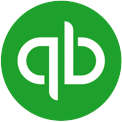Managing your business’ finances and revenues can be a full-time job, and you might even have a full-time accountant on staff to handle the books. Many small business owners, however, prefer to handle this aspect of their businesses themselves, foregoing an accountant in order to maintain control over their own books.
If you’re a small business that falls into the latter category, here are some standard accounting formulas you should know. These formulas are generally regarded as universal to any business and will provide you with the figures you need to understand the viability and health of your business.





